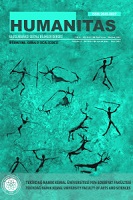Mehmed Şakir Paşa’nın Osmanlı Terminolojisine Dair “Istılahât-ı Kadîme”si
Mehmed Şakir Pasha’s “Istılahât-ı Kadîme” on Ottoman Terminology
Author(s): Göker İnanSubject(s): Lexis, Sociolinguistics, The Ottoman Empire, Turkic languages
Published by: Namık Kemal Üniversitesi Fen-Edebiyat Fakültesi
Keywords: Mehmed Şakir Pasha; Yeni Osmanlı Tarihi; Istılahât-ı Kadîme; Ottoman Terminology;
Summary/Abstract: Mehmed Şakir Pasha (d. 1914) is the father of Cevat Şakir Kabaağaçlı (d. 1973), known as the “Halikarnas Balıkçısı”, and is famous for his history book called New Ottoman History besides military and administrative duties. He wanted to cover the period from the beginning of the Ottoman Empire to 1876 in his work and completed most of it however, only the first two volumes were published in Ottoman printing houses. The subject of this article is Istılahât-ı Kadîme, which contains some terms used in Ottoman institutions and the early modern Ottoman Empire, and is located right at the beginning of the work. Mehmed Şakir Pasha prepared this chapter to assist an Ottoman reader in the early 1900s. He gave explanations of some terms, such as “kılıç tımarı”, “muhızr ağa”, “voynuk” and “yurtluk”, which had been forgotten for centuries. Şakir Pasha used both Ottoman chronicles and foreign sources up to that time while preparing his work. In addition, this “ıstılahât” on Ottoman civilization and history is remarkable in that it is one of our first history dictionaries.
Journal: Humanitas - Uluslararası Sosyal Bilimler Dergisi
- Issue Year: 11/2023
- Issue No: Spec. Iss.
- Page Range: 183-198
- Page Count: 16
- Language: Turkish

